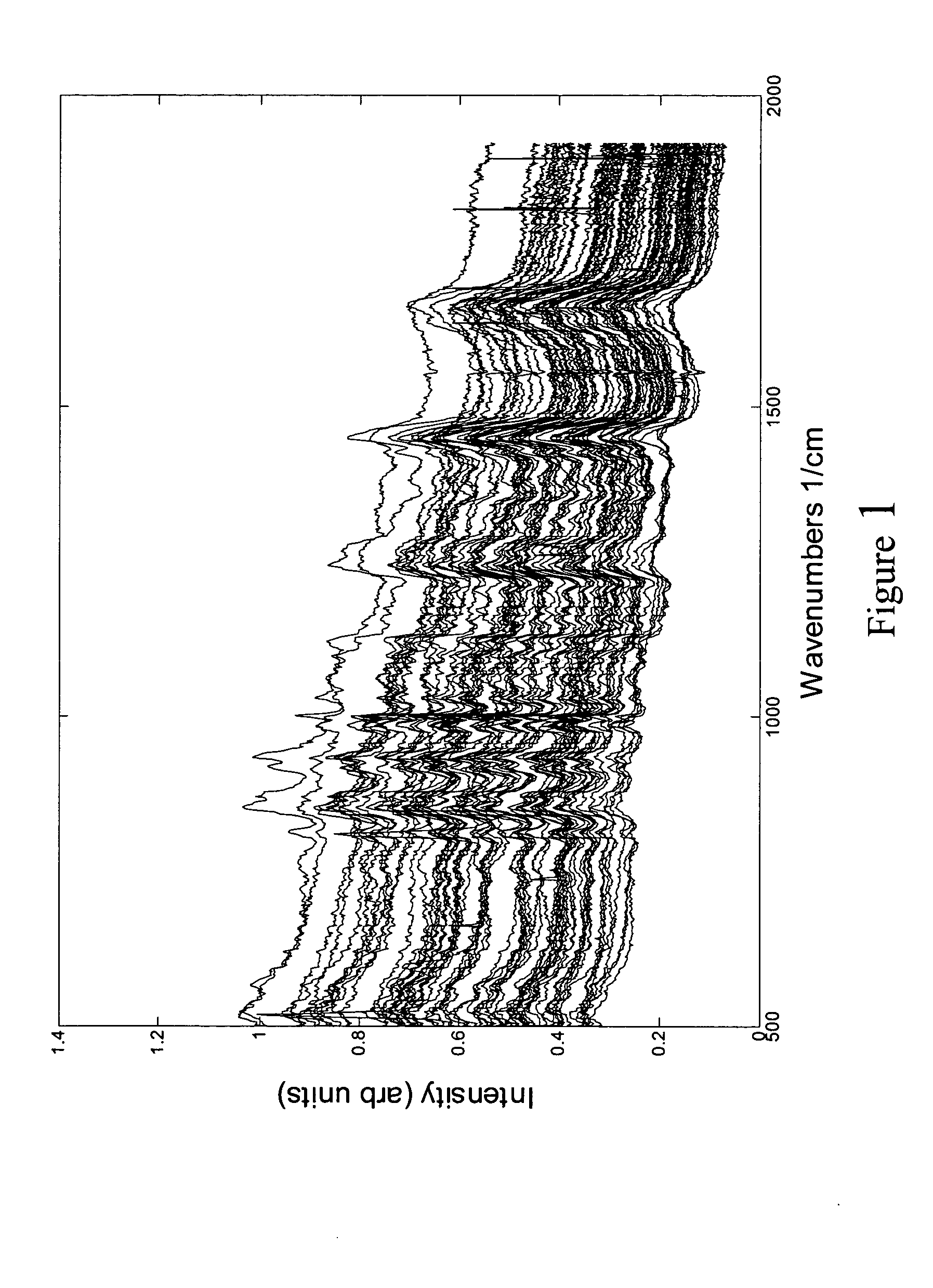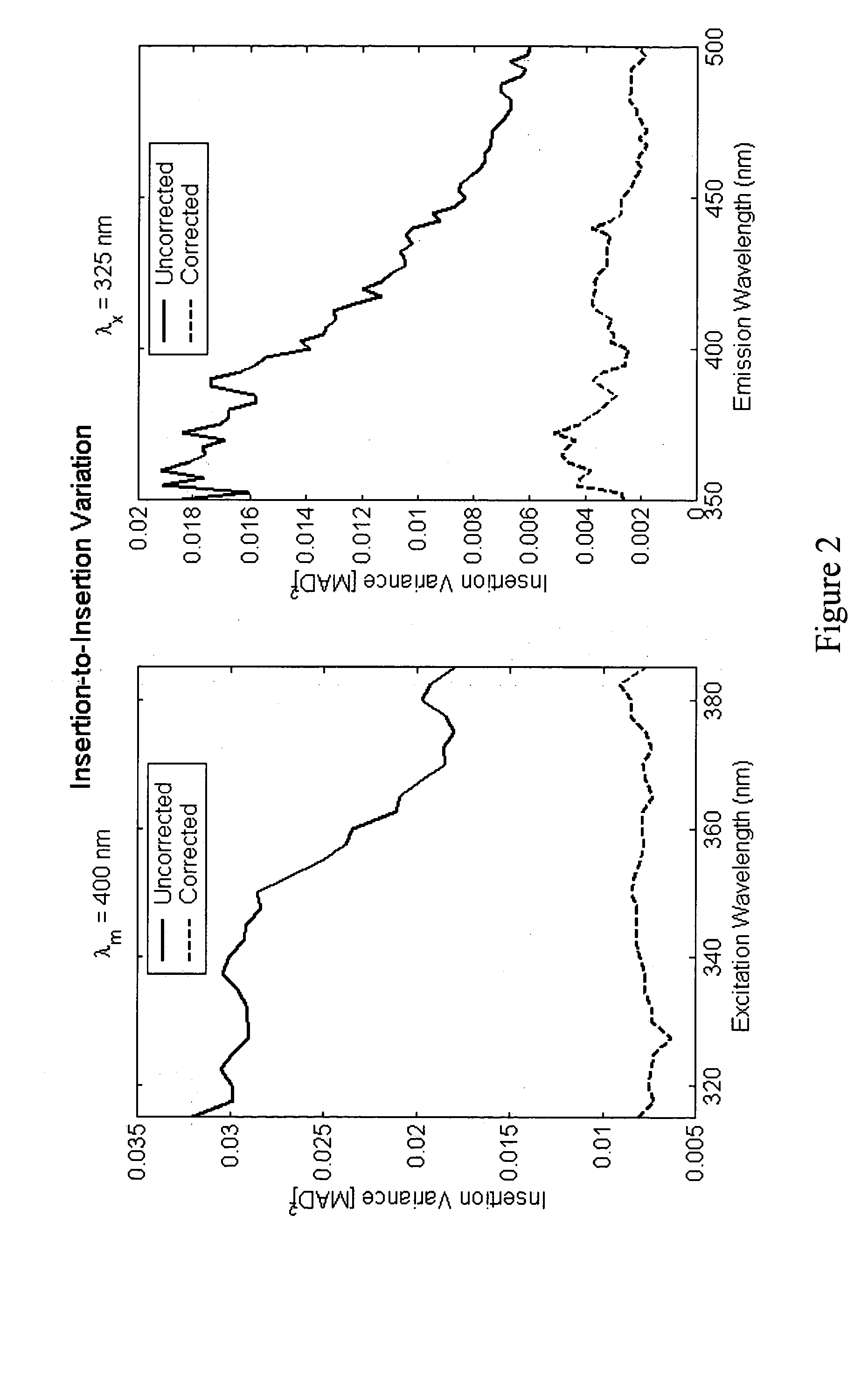Determination of disease state using Raman Spectroscopy of tissue
- Summary
- Abstract
- Description
- Claims
- Application Information
AI Technical Summary
Benefits of technology
Problems solved by technology
Method used
Image
Examples
example i
[0057] Example I of such a system embodies a continuous-wave diode laser as the light source. The optical-coupling sub-system is comprised of a fiber probe that couples the excitation light to the tissue and collects Raman scattering emanating from the tissue, as illustrated in FIG. 6. The probe incorporates a line-pass filter to reject Raman emission of the fiber itself, as well as rejecting any broad spontaneous emission from the diode laser (i.e., the filter only passes the narrow bandwidth of the laser). A pair of dichroic mirrors creates a coaxial path for excitation and emission. A final lens focuses the excitation radiation and then collects and collimates Raman emission. The Raman emission passes through the second of the dichroic pair and a line blocking filter rejects Rayleigh scattered excitation final. A lens couples the Raman emission into a fiber or fiber bundle for relay to the detection system. The detection system contains a spectrograph and a detector such as a CCD...
PUM
 Login to View More
Login to View More Abstract
Description
Claims
Application Information
 Login to View More
Login to View More - R&D
- Intellectual Property
- Life Sciences
- Materials
- Tech Scout
- Unparalleled Data Quality
- Higher Quality Content
- 60% Fewer Hallucinations
Browse by: Latest US Patents, China's latest patents, Technical Efficacy Thesaurus, Application Domain, Technology Topic, Popular Technical Reports.
© 2025 PatSnap. All rights reserved.Legal|Privacy policy|Modern Slavery Act Transparency Statement|Sitemap|About US| Contact US: help@patsnap.com



